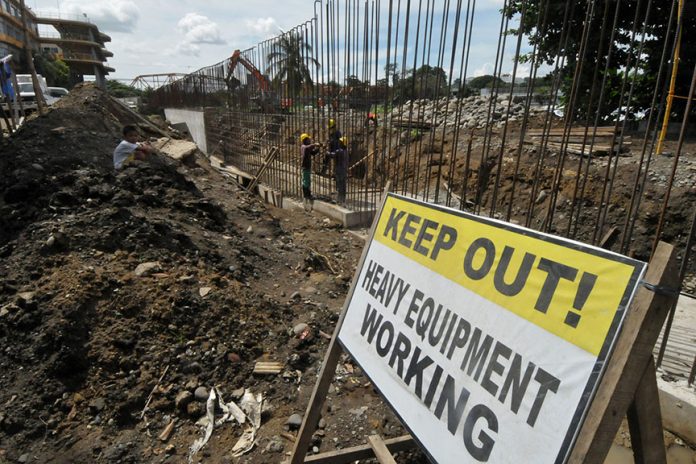
CAGAYAN DE ORO CITY – The P11-billion peso “mega dike” project which was designed to save thousands of lives along the banks of Cagayan de Oro River may not be ready the next time a powerful typhoon much worse than “Sendong” strikes the city, officials said.
Vinah Jeanne Maghinay, spokesperson of the Department of Public Works and Highways (DPWH) Region 10, said segments of the dike that would have been financed by Japan International Cooperation Agency (JICA) have not even started yet five years after typhoon Sendong devastated villages along the riverbanks on Dec. 17, 2011.
Maghinay said the Japanese development agency has required that the local government of Cagayan de Oro provide relocation sites for the more than 3,000 families that would be affected by the 12-kilometer flood control system.
More than 674 persons perished on the night of Dec. 16, 2011 when flash floods hit 41 barangays here, according to the National Disaster Risk Reduction and Management Council (NDRRMC).
Typhoon “Sendong,” the deadliest storm to hit this city, also affected 38,071 families or 228,576 persons and destroyed or damaged 12,635 houses in the villages beside the river.
Ermin Pimentel, of the Cagayan de Oro Shelter and Housing Development Multisectoral Task Force, blamed the political squabble between Mayor Oscar Moreno and the city council then dominated by Padayon Pilipino for the non-delivery of houses for those affected by the mega dike project.
“In the first three years of Mayor Moreno practically we have done nothing because the city council refused to give us any budget for the housing,” Pimentel lamented.
He said he is optimistic that things will change for the better in 2017 when the new city council now dominated by Moreno’s allies will give them the money to buy the lands.
He said a number of government agencies and private firms have expressed interest to invest in the housing project if the local government of Cagayan de Oro can provide the land.
“The city government no longer has any land left. Most of its properties were made into relocation sites for those directly affected by Sendong,” Pimentel said.
He said the city government, with the help of donor agencies, has constructed 20 relocation sites that housed 5,796 families directly affected by the typhoon.
“But there is nothing left for those who will be affected by the dike,” Pimentel pointed out.
The dike project stretches for 12 kilometers from the mouth of the Cagayan de Oro River to the Pelaez Bridge in Baungon, Bukidnon.
JICA had set a budget of P8.549 billion for the project while the national government contributed another P2.710 billion during the administration of former Benigno Aquino III.
“Its height is high enough than the waters of Sendong with a few meters to spare. It is enough to keep any flood waters from spilling from the river,” Maghinay said.
“It is the best flood control defense for Cagayan de Oro,” she added.
Maghinay said the DPWH is presently constructing the dikes along the river using national government funds.
She said the segments of the dike being constructed by the DPWH is already 81 percent completed.
Maghinay said a bridge spanning Barangays Balulang to Macasandig is also being constructed by the DPWH.
The bridge cuts across Sitio Cala-cala in Barangay Macasandig, the ground zero of Sendong where hundreds died and many of the houses were destroyed.
The JICA dike segment, Maghinay said, would have completed the entire flood control project and seal the city. (Froilan Gallardo / MindaNews)






